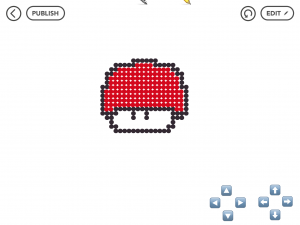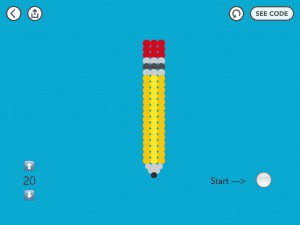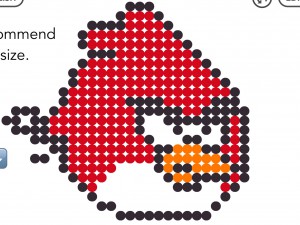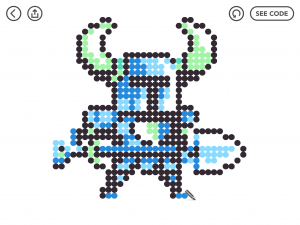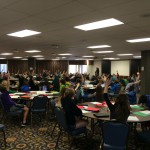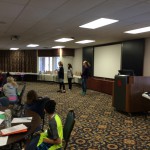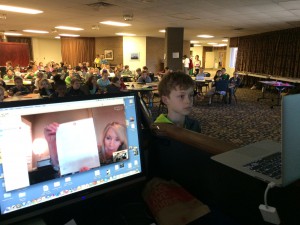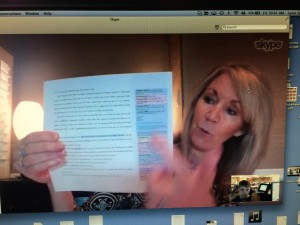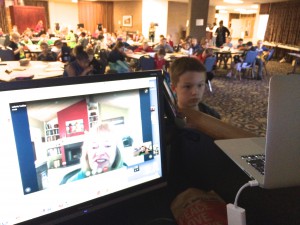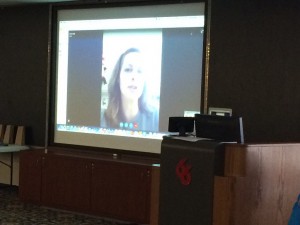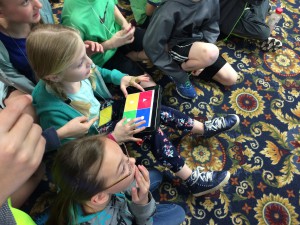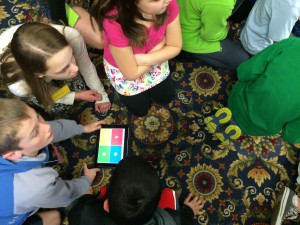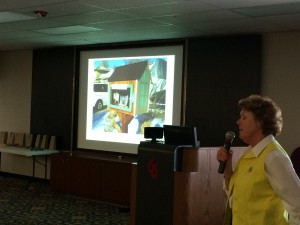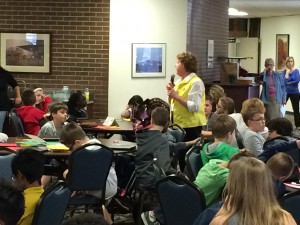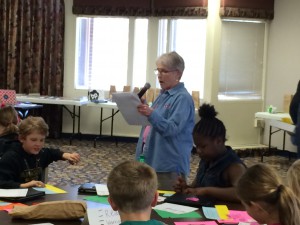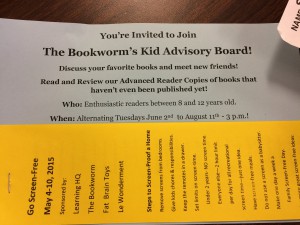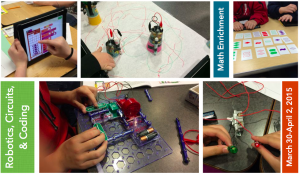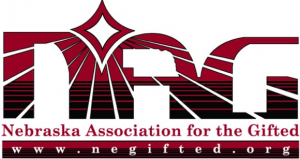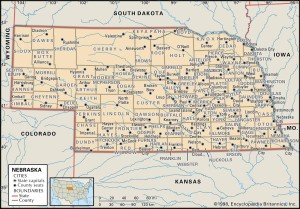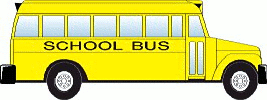Are you interested in teaching STEM concepts through engineering connections? If so, the 2015 Kiewit Teacher Day is for YOU! Absolutely no engineering background or knowledge is needed to participate and all teachers from K-12 in any discipline are invited to attend. BONUS: There will be lots of free giveaways and door prizes!
All posts by lspady
EY Identification Questions
Thank you for using the Google form to submit questions about the EY identification process. We are trying to be as transparent as possible and appreciate any questions you have.
Q. Under Tier 1, what does E/I time mean?
A. E/I stands for Enrichment/Intervention time (also referred to as I/E time). It is a 43 minute block of time each day in the schedule for students in grades 3-6. The EY team has tried to capitalize on the E/I block this year by providing a variety of resources. We started the year by coming into all classrooms once every 6 days to explain our blog, Symbaloo, seminars, and various other opportunities. We have also consistently communicated with classroom teachers about possible E/I activities/projects. Check out some of the results from E/I time on our Student Showcase Wiki.
Q. When does the next testing occur to move up a Tier?
A. Students take the SAT 10 and OLSAT in 3rd and 5th grade. In the past, these two grades have been the typical time for a student to qualify for EY. That being said, we are having discussions about how we can make the ID process ongoing based on a student’s need. We are also exploring ways we can provide more enrichment opportunities for the primary grades.
Q. Is testing ever based on age instead of grade?
A. The SAGES (Screening Assessment for Gifted Elementary Students) is scored using a normal normative sample, which is stratified on the basis of age (as well as gender, race, ethnic group membership, and geographic location).
Q. These tests are one snap-shot of my child’s ability. What if the child does not feel well the day of testing? What else is taken into consideration?
A. Instead of using a single piece of data or a specific cut-off score to determine a child’s ability, we want to paint a more complete picture of a child’s strength(s) by using various sources of data. This includes input from the parents and classroom teacher. Many times, the classroom teacher can speak to the individual scores and tell whether or not they are indicative of the child’s performance in the classroom.
Q. Are Tier 1 services different than services provided to all students? If so, how?
A. Tier 1 services are open to all students, however, we hope to use a child’s participation in Tier 1 opportunities as a way to discuss and modify services needed. For example, a student receiving Tier 1 services might complete Math Minutes on a weekly basis. This tells us that the student has an interest in math and might benefit from some of the services we provide in Tier 2.
3D Moving Background in Hopscotch
Several students are “playing” and “branching” projects in Hopscotch, but we’re more interested in the “creating” part! We know you have great ideas and we want to showcase your amazing creative talent! We’ve shared a few projects on our wiki, but we want MORE!
Here is a new video tutorial on how to create 3D Moving Backgrounds for video games and other projects in Hopscotch. Don’t forget all the other great tutorials too!
If you create a project in Hopscotch, leave a comment with your name, school, and a description of what you created. Someone will come to your school and video/take pictures of your amazing work!
Go Code and Create!
Highlights from BOTB 2015
 Recipe for Sharing Your Love of Reading & Writing
Recipe for Sharing Your Love of Reading & Writing
- 20 Books
- Over 150 Authentic Book Projects
- 3 Authors
- 1 Playwright
- A Dash of Competition
- A Little Free Library
- A Sprinkling of our Favorite Neighborhood Bookstore
Yields: 120 students receiving a message of inspiration, perseverance, and hope!
Battle of the Books took a different spin this year at Westside Community Schools. The morning started off with kids arriving and putting their book projects on display. For each book read, students chose one project to complete. There were 3-5 project choices for each book ranging from dioramas, to writing a letter to the author, to doing further research on a topic in the book.
Drew, 4th grader at Swanson said: I loved doing the Battle Of The Books activities, and reading the books! Most of the books were amazing! ![]()
Check out some of the student projects submitted!
Next, Omaha Playwright (and Westside graduate, parent and community member) Ellen Struve talked about her profession and love of reading & writing. Not only did she talk about her personal journey to becoming a playwright, but Ms. Struve also involved the students in creating their very own play! Throughout her presentation, Ellen embedded information about characters, dialogue, conflict, scene, and setting. Based on the engagement level and questions asked by kids, there will most likely be additional play writers emerging from Westside in the future!
We found 3 BOTB authors on Twitter and they graciously agreed to Skype with our students! Katherine Fitzmaurice, author of A Diamond in the Desert was up first. She emphasized all the research that went into writing the book and even showed us pictures of the real characters. She also showed students a pile of rejection letters and the numerous changes suggested by her editor. Her advice for students wanting to write a book: “You have to really like what you’re writing about. Believe in yourself and like your story!”
Our next Skype call was with Valerie Hobbs, author of Sheep. Many students chose to write Ms. Hobbs a letter for their book project and she graciously wrote letters back to all of them! Talk about making a personal connection! Several students read Sheep and fell in love with Jack, the border collie who tells the story.
Many students were excited when Ms. Hobbs shared information about the newly released sequel to Sheep. At the end of Sheep, Jack finds Luke at the Good Shepherd Home for Boys. Together, they are adopted by a couple and the sequel Wolf continues Luke and Jack’s story at their new home, a sheep ranch in Northern California. Ms. Hobbs’ writing advice for the students: “Do a whole lot of reading of the type of book you’d like to write.”
Our final Skype call was with W.H. Beck, author of Malcolm at Midnight. In addition to being an author, Ms. Beck is a school librarian. Her advice for students was, “Make sure to set aside time each day to write. You can make a list, write a short story, or just write down your random thoughts.”
Click Here for a Portion of our Skype Call With W.H. Beck
We didn’t forget the competition portion of Battle of the Books. Students worked in teams to answer questions about all 20 books. They used their iPads and participated in a Kahoot! created by Mrs. Lusero. Students also took an individual test on a Google form.
At the end of the day, Marla Fries shared her love of reading by telling the students about her Little Free Library. Marla is a WCS community member, retired administrator, and volunteer at Westgate Elementary.
After the event, one student was so inspired that she wanted to build her own Little Free Library! Check out Ava’s work!
Ellen Scott from our neighborhood bookstore, The Bookworm, also shared her personal story and love of reading with the students. She presented the kids with an opportunity to be on The Bookworm’s Kid Advisory Board. We are so fortunate to have a family-owned bookstore in our Westside community!
Friday, March 13th was truly a wonderful day to celebrate many accomplishments! To all the students who participated, Thank You for all your hard word and willingness to try something new. The EY Team learned a lot throughout the process and we look forward to hearing your feedback!
If you attended Battle of the Books this year, please consider leaving a comment and letting us know your favorite part! Also, click here for a quick survey about the day.
WCS Spring Break Enrichment Classes
Sorry…All Classes Are Full
Sign up now for Spring Break Enrichment Classes!
During the week of spring break (March 30-April 2), four enrichment classes will be offered to 2nd-6th graders at Westside Community Schools. All classes will be held at Westgate Elementary at 7802 Hascall St. Click on the flier below to find class descriptions and times. Classes are limited to 20 students so sign up today!
Reading Lists
I recently attended the Nebraska Association for the Gifted (NAG) spring conference and attended many beneficial sessions. One in particular provided a wealth of reading suggestions for students and the presenters gave me permission to share the lists. Enjoy!
Is it summer yet?
sun image taken from http://pdclipart.org
Not quite, but it’s never to early to start planning ahead! There are many great learning opportunities available for kids during the summer. There are a couple options listed below, but if you know of others, please leave a comment with the details.
Engineering Learning Center: http://www.timeforstem.com/
The Studios at TAG Academy: http://www.tagacademyomaha.
Strategic Air and Space Museum: http://www.sasmuseum.com/camps/
2015 Young Writers Camp: http://www.unl.edu/newp/2015-young-writers-camp
Blocks and Bricks Learning Adventures: http://www.tutorinomaha.com/about-us/summer-camp-2015/
Road Trip Anyone?
Map taken from http://www.mapofus.org/nebraska/
I absolutely love road trips which is why I got so excited when “12 Nebraska towns you’ve probably never heard of” was recently published in The Lincoln Journal Star. I immediately thought to myself…
What a perfect opportunity for students to learn about our great state and possibly plan a road trip for the family!
Your Challenge (if you choose to accept it): Research the Nebraska towns listed in the article. Here are some sample questions to guide your research…
- Where in Nebraska is the town located?
- How did the town get its name?
- What is the town known for?
- When was the town settled?
- What unique attractions are in the town and/or in nearby towns?
- What are some interesting facts about the town?
- Is a day-trip to the town doable? If so, what is the mileage from Omaha?
Present your information in a format of your choice. Be creative! When you’re finished, submit your product to the EY Coordinator at your building.
Below are the 12 Nebraska towns listed in the article. If you think there’s another Nebraska town that should be on the list, leave a comment and tell us why.
- Callaway, NE
- Edison, NE
- Farwell, NE
- Palisade, NE
- Antioch, NE
- Taylor, NE
- Beemer, NE
- Leigh, NE
- Nenzel, NE
- Wynot, NE
- Shubert, NE
- Marsland, NE
Battle of the Books Schedule
The 2015 Battle of the Books celebration is only a week away and we are getting geared up for an exciting day! Here’s the schedule:
Friday, March 13 @ Westside Community Conference Center
9:30-10:00: Students will arrive and set up their projects (up to 2 per student). There will be BOTB questions looping on the screen for students to answer. During this time, students will have an opportunity to earn tickets for the prize drawings.
10:00-10:25: Presentation by Playwright Ellen Struve
10:30-11:00: Skype call with Kathryn Fitzmaurice-author of BOTB book A Diamond in the Desert
11:00-11:10: Another chance to earn prize tickets by answering BOTB questions
11:15-11:45: Skype call with Valerie Hobbs-author of BOTB book Sheep
11:45-12:10: Lunch with another opportunity to earn prize tickets
12:10-12:30: Group BOTB competition using Kahoot!
12:30-12:50: Skype call with W.H. Beck-author of BOTB book Malcolm at Midnight
12:55-1:30: Individual BOTB competition
1:30-1:45: Westside Community member and retired administrator Marla Fries will do a presentation on her Free Little Library
1:45-2:05: Ellen Scott from the Bookworm will do a presentation on our Westside neighborhood family-owned bookstore. She will also be promoting a reading challenge!
2:05-2:20: Awards
2:25: Load buses and head back to school
Bus 1: pick up Hillside at 8:50, Westbrook at 9:00, Swanson at 9:10 and Sunset at 9:20
Bus 2: pick up WMS at 8:50 (any Algebra or Pre-Algebra students), Loveland at 9:00, and Westgate at 9:10, and Paddock at 9:20
Bus 3: pick up Oakdale at 9:00, Rockbrook at 9:10, and Prairie Lane at 9:20.
bus graphic taken from http://www.pdclipart.org
Pigs will be Pigs Story Book
Here is the link to Pigs will be Pigs by Amy Axelrod. Tally the coins and dollars the pigs found while going through their house and then find the total.
http://www.teachertube.com/video/interactive-read-aloud-video-pigs-will-be-p-274915

